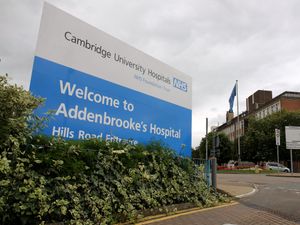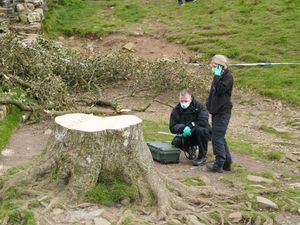76,000 children in England waiting for speech and language therapy
Some 17% of speech and language therapy posts in England are vacant, the Royal College of Speech and Language Therapists said.

More than 75,000 children in England are waiting for speech and language therapy – an all-time high, figures show.
NHS England data from May shows 97,824 people in the community waiting for help (76,331 children and 21,493 adults), with some facing long delays.
The data showed 22,115 children had been waiting 18 to 52 weeks, while 6,053 youngsters were waiting over 52 weeks.
The figures are a rise on the same month last year, when 90,571 people were waiting (72,168 children and 18,403 adults).
Community speech and language therapists provide support to children and young people with speech, language and communication difficulties and/or issues with swallowing. They are also part of the team which assesses people for autism.
Therapists offer assessment and support in schools, health clinics, hospitals and nurseries.
The Royal College of Speech and Language Therapists, which analysed the data, has also surveyed its members on the current state of the sector.
Some 299 speech and language therapy services across the UK responded to the poll, shared exclusively with the PA news agency, of which 160 are based in England.
The survey found 17% of speech and language therapy posts in England are vacant (when both the NHS and independent sector vacancies are taken into account). When it comes to NHS posts alone, 16% need to be filled.
Furthermore, the percentage of NHS vacancies for speech and language therapy supporting people with learning disabilities stands at 25%.
About a third of independent services in England are commissioned by the NHS to run services. Others may be contracted by schools.
The poll also found just under a quarter of London’s speech and language therapy posts are vacant.
The Royal College of Speech and Language Therapists’ chief executive, Steve Jamieson, said: “Speech and language therapy services are close to breaking point with high vacancy rates and not enough people in the workforce to fill the roles.
“Depleted teams are grappling with supporting increasing numbers of people with communication, eating, drinking, and swallowing difficulties, with waiting lists spiralling out of control.
“The number of children waiting for speech and language therapy is at an all-time high.
“Typically, they’re waiting for a speech and language therapist to assess their needs, which might include speech sound difficulties, developmental language disorder or a stammer, and identify the strategies and support that will help.
“This can include direct intervention from a speech and language therapist or speech and language therapy assistant, advice for parents and carers, or training for staff in schools and settings.
“When children’s communication needs are not identified early and supported appropriately, this can impact their educational attainment, their emotional wellbeing and mental health.
“The speech and language therapy workforce crisis must be addressed urgently, and we look forward to working with the new Government to find sustainable solutions.”
An NHS spokesperson said: “While the number of speech and language therapists working in the NHS has increased by over a third in the last decade, too many patients are waiting too long for access to speech and language therapy.
“The NHS Long Term Workforce Plan will further boost numbers and mean patients can receive this life-changing therapy more quickly.”





